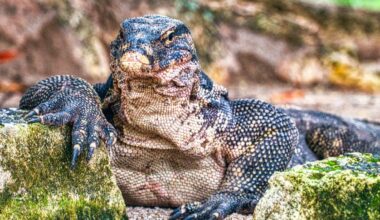Seals are some of the most charming and mysterious creatures in the ocean. As I’ve learned more about them, I’ve come to appreciate their incredible adaptations and behaviors. Whether they’re playing in the water or lounging on a rocky shore, seals have a unique way of surviving and thriving in their marine habitats. Let me share with you some amazing facts about seals that I find absolutely fascinating.
1: Seals Are Masters of Diving
One of the coolest things I’ve learned about seals is their incredible diving abilities. Some species, like the Weddell seal, can dive to depths of over 2,000 feet! What’s even more impressive is that they can stay underwater for up to an hour without needing to come up for air. Their ability to adapt to such extreme conditions is a testament to their specialized physiology.
2: Seals Have Built-in Earplugs
Seals are excellent swimmers, and they’ve evolved to thrive in aquatic environments. One of their most fascinating adaptations is their earplugs. Seals have special muscles around their ear canals that allow them to close them when they dive into the water. This prevents water from entering their ears, helping them maintain balance and orientation while underwater.
3: They Can ‘Walk’ on Land
Unlike some other marine mammals, seals are able to move on land, though they do so in a unique way. They can’t exactly walk like land mammals, but they use their front flippers to propel themselves in a wriggling motion, almost like they’re “crawling” along the shore. It’s both adorable and impressive to watch them navigate their terrestrial surroundings!
4: There Are Over 30 Species of Seals
Seals aren’t just one species; they belong to a diverse group, with more than 30 different species found around the world. These species are grouped into two categories: earless seals (or true seals) and eared seals, the latter of which includes sea lions and fur seals. Each species has its own unique characteristics and adaptations, but they all share the same playful and curious nature.
5: Seals Can Sleep Underwater
Believe it or not, seals can actually sleep while underwater! While some species may take short naps on land, many seals can rest in the water, floating or even submerged. They’ve adapted to do this by shutting down one side of their brain at a time, a process known as unihemispheric slow-wave sleep. This allows them to remain alert to potential threats while still getting rest.
6: Seals Have Whiskers with Superpowers
Seals’ whiskers aren’t just for show, they’re highly sensitive tools that help them navigate the underwater world. These whiskers, or vibrissae, allow seals to detect vibrations in the water, helping them locate prey even in the dark depths. The whiskers are incredibly fine-tuned, making them one of the most important sensory tools for these marine animals.
7: Seals Have Incredible Hearing
It’s not just their whiskers that help seals in the water, their sense of hearing is extraordinary. Seals can hear sounds both above and below the water’s surface, which makes them highly effective hunters. Their ear structures are adapted to pick up even the faintest sounds, such as the movement of fish or the calls of other seals.
8: Seals Can Communicate with Each Other
Seals have a variety of vocalizations that they use to communicate with one another. They make barking, grunting, and growling sounds, and each species has its own distinctive calls. I’ve learned that these vocalizations are used for everything from mating calls to warning others of danger. Interestingly, seals also communicate through body language, such as head-bobbing and flipper movements.
9: They Have a Thick Layer of Blubber
Seals have a thick layer of blubber under their skin, which helps insulate them against the cold temperatures of the ocean. This layer can make them look round and cuddly, but it’s essential for their survival in colder waters. Blubber not only provides warmth but also serves as an energy reserve when food is scarce.
10: Seals Are Great Parents
When it comes to raising their pups, seals are attentive and protective parents. After giving birth, a mother seal will nurse her pup for several weeks, providing essential nutrients to help them grow strong. In some species, like the harp seal, pups are born with a thick white coat that helps them stay warm until they can develop their own blubber layer. Mothers are often highly protective and will fiercely defend their young from predators.
Seals: Nature’s Ocean Marvels
Seals are truly remarkable creatures with fascinating behaviors and adaptations that allow them to thrive in their oceanic environments. From their amazing diving abilities to their unique way of communicating, there’s no shortage of wonder when it comes to these marine mammals. I hope these facts have given you a new appreciation for seals and sparked a sense of awe for these incredible animals that call our oceans home!










